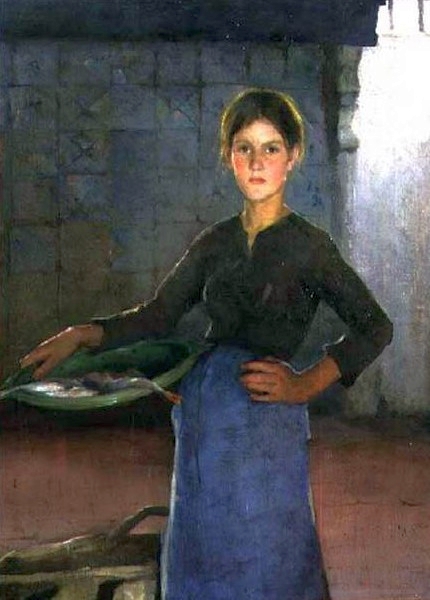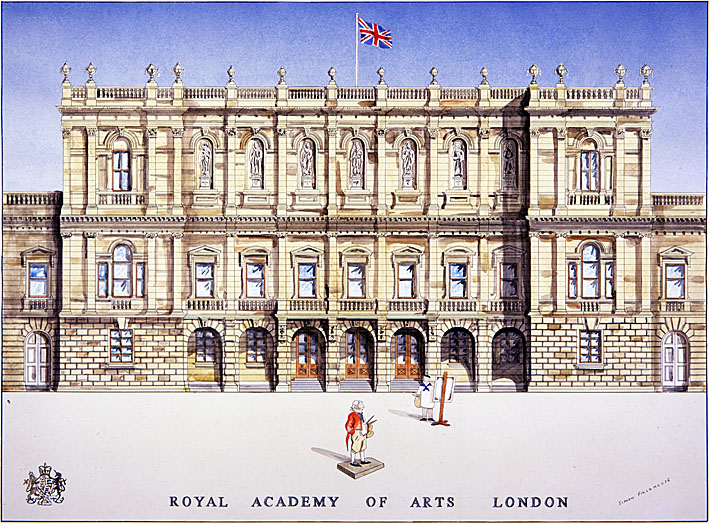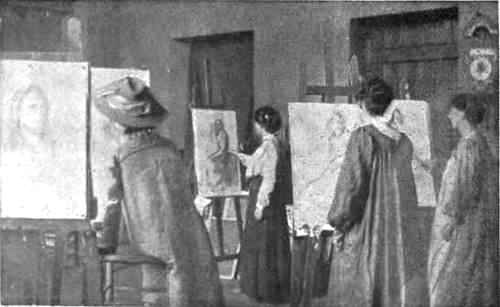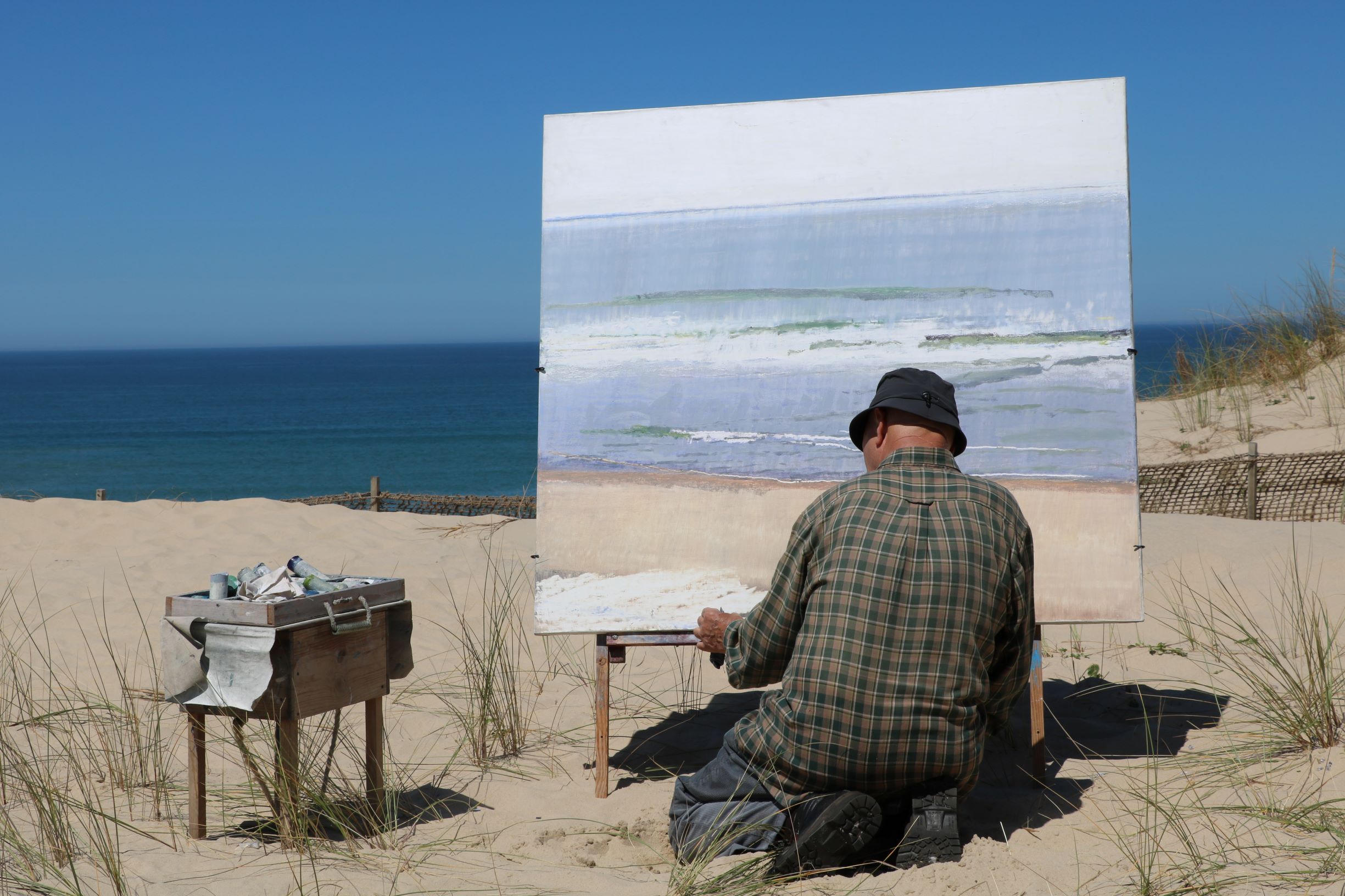|
Elizabeth Armstrong Forbes
Elizabeth Adela Forbes (née Armstrong; 29 December 1859 – 16 March 1912) was a Canadians, Canadian Painting, painter who was primarily active in the UK. She often featured children in her paintings and ''School Is Out'' (painted in Newlyn) is one of her most popular works. She was friends with the artists James Abbott McNeill Whistler and Walter Sickert, both of whom influenced her work. Her etchings in particular are said to show the influence of Whistler. After studying and working in continental Europe, Forbes settled in Newlyn, England, where she raised her son and established a school with her husband, Stanhope Forbes. She had her works exhibited in notable shows and won medals for her works. Her paintings are in collections of museums in Canada, United States and England. Personal life Armstrong was born 29 December 1859 in Kingston, Ontario, Kingston, Canada West. She was the youngest child of William Armstrong, an employee of the government of the United Provin ... [...More Info...] [...Related Items...] OR: [Wikipedia] [Google] [Baidu] |
Kingston, Ontario
Kingston is a city in Ontario, Canada, on the northeastern end of Lake Ontario. It is at the beginning of the St. Lawrence River and at the mouth of the Cataraqui River, the south end of the Rideau Canal. Kingston is near the Thousand Islands, a tourist region to the east, and the Prince Edward County, Ontario, Prince Edward County tourist region to the west. Kingston is nicknamed the "Limestone City" because it has many heritage buildings constructed using local limestone. Growing European exploration in the 17th century and the desire for the Europeans to establish a presence close to local Native occupants to control trade led to the founding of a New France, French trading post and military fort at a site known as "Cataraqui" (generally pronounced ) in 1673. The outpost, called Fort Cataraqui, and later Fort Frontenac, became a focus for settlement. After the Conquest of New France (1759–1763), the site of Kingston was relinquished to the British. Cataraqui was renamed K ... [...More Info...] [...Related Items...] OR: [Wikipedia] [Google] [Baidu] |
Newlyn School
The Newlyn School was an art colony of artists based in or near Newlyn, a fishing village adjacent to Penzance, on the south coast of Cornwall, from the 1880s until the early twentieth century. The establishment of the Newlyn School was reminiscent of the Barbizon School in France, where artists fled Paris to paint in a more pure setting emphasising natural light. These schools along with a related California movement were also known as En plein air. History Some of the first British artists to settle in the area had already travelled in Brittany, but found in Newlyn a comparable English environment with a number of things guaranteed to attract them: fantastic light, cheap living, and the availability of inexpensive models. The artists were fascinated by the fishermen's working life at sea and the everyday life in the harbour and nearby villages. Some paintings showed the hazards and tragedy of the community's life, such as women anxiously looking out to sea as the boats go o ... [...More Info...] [...Related Items...] OR: [Wikipedia] [Google] [Baidu] |
Mortimer Menpes
Mortimer Luddington Menpes (22 February 1855 – 1 April 1938) was an Australian-born painter, author, printmaker and illustrator. Born and raised in Port Adelaide, South Australia, Menpes migrated with his family to London, England in his early 20s, where he went on to study at the School of Art and exhibit at the Royal Academy. In 1880, during a sketching tour in Brittany, he befriended, and became a "disciple" of James McNeill Whistler. Under his influence, Menpes began incorporating motifs and techniques of Japanese art into his work, and in 1887, he travelled to Japan to witness its culture first-hand. He produced many Japonist works while there, which he exhibited back in London in 1888 at his first solo show. It proved to be a critical and commercial success, encouraging Menpes to travel further abroad for artistic inspiration, and over the next two decades he went to India, China, Kashmir, and Myanmar, among other countries. He also went to South Africa as a war artist d ... [...More Info...] [...Related Items...] OR: [Wikipedia] [Google] [Baidu] |
Royal Academy
The Royal Academy of Arts (RA) is an art institution based in Burlington House in Piccadilly London, England. Founded in 1768, it has a unique position as an independent, privately funded institution led by eminent artists and architects. Its purpose is to promote the creation, enjoyment and appreciation of the fine arts through exhibitions, education and debate. History The origin of the Royal Academy of Arts lies in an attempt in 1755 by members of the Royal Society of Arts, Society for the Encouragement of Arts, Manufactures and Commerce, principally the sculptor Henry Cheere, to found an autonomous academy of arts. Before this, several artists were members of the Society for the Encouragement of Arts, Manufactures and Commerce, including Cheere and William Hogarth, or were involved in small-scale private art academies, such as the St Martin's Lane Academy. Although Cheere's attempt failed, the eventual charter, called an 'Instrument', used to establish the Royal Academy of ... [...More Info...] [...Related Items...] OR: [Wikipedia] [Google] [Baidu] |
Royal Institute Of Painters In Water Colours
The Royal Institute of Painters in Water Colours (RI), initially called the New Society of Painters in Water Colours, is one of the societies in the Federation of British Artists, based in the Mall Galleries in London. History In 1831, the society was founded as the ''New Society of Painters in Water Colours'', competing with the Royal Watercolour Society (RWS), which had been founded in 1804. The founding members were William Cowen, James Fudge, Thomas Maisey (treasurer), O. F. Phillips, Joseph Powell (president), W. B. S. Taylor, and Thomas Charles Wageman. The New Society differed from the RWS in policy, by exhibiting non-members' work also. Both societies challenged the Royal Academy's refusal to accept the medium of watercolours as appropriate for serious art. In 1839, Henry Warren (1794–1879) became president of the society and was re-elected for many years until he resigned due to failing eyesight. In 1863, there was a name change to the ''Institute of Painters in W ... [...More Info...] [...Related Items...] OR: [Wikipedia] [Google] [Baidu] |
Zandvoort
Zandvoort () is a municipality in the province of North Holland, Netherlands. It is one of the major beach resorts of the Netherlands; it has a long sandy beach. It is bordered by coastal dunes of Zuid-Kennemerland National Park and the Amsterdam water supply dunes. It hosts the country's most prominent motor racing circuit, Circuit Zandvoort. The municipality of extends to take in Bentveld; it had a population of 16,954 in 2017. A nudist bathing section of the beach begins about 2 km to the south, with six eateries, which extends kilometers further. History Zandvoort is known to exist in 1100, called ''Sandevoerde'' (a combination of "sand" and "''voorde''", meaning ford; compare English '' Sandford''). Until 1722 the area was under the control of the Lords of Brederode. The village was dependent on fishing for many centuries until the 19th century when it started to transform itself into a seaside resort, following the pattern set by similar towns in the United Kin ... [...More Info...] [...Related Items...] OR: [Wikipedia] [Google] [Baidu] |
Haarlem
Haarlem (; predecessor of ''Harlem'' in English language, English) is a List of cities in the Netherlands by province, city and Municipalities of the Netherlands, municipality in the Netherlands. It is the capital of the Provinces of the Netherlands, province of North Holland. Haarlem is situated at the northern edge of the Randstad, one of the Largest European cities and metropolitan areas, more populated metropolitan areas in Europe; it is also part of the Amsterdam metropolitan area. Haarlem had a population of in . Haarlem was granted city status or in 1245, although the first city walls were not built until 1270. The modern city encompasses the former municipality of Schoten, Netherlands, Schoten as well as parts that previously belonged to Bloemendaal and Heemstede. Apart from the city, the municipality of Haarlem also includes the western part of the village of Spaarndam. Newer sections of Spaarndam lie within the neighbouring municipality of Haarlemmermeer. Geography ... [...More Info...] [...Related Items...] OR: [Wikipedia] [Google] [Baidu] |
Brittany
Brittany ( ) is a peninsula, historical country and cultural area in the north-west of modern France, covering the western part of what was known as Armorica in Roman Gaul. It became an Kingdom of Brittany, independent kingdom and then a Duchy of Brittany, duchy before being Union of Brittany and France, united with the Kingdom of France in 1532 as a provinces of France, province governed as a separate nation under the crown. Brittany is the traditional homeland of the Breton people and is one of the six Celtic nations, retaining Culture of Brittany, a distinct cultural identity that reflects History of Brittany, its history. Brittany has also been referred to as Little Britain (as opposed to Great Britain, with which it shares an etymology). It is bordered by the English Channel to the north, Normandy to the northeast, eastern Pays de la Loire to the southeast, the Bay of Biscay to the south, and the Celtic Sea and the Atlantic Ocean to the west. Its land area is 34,023 ... [...More Info...] [...Related Items...] OR: [Wikipedia] [Google] [Baidu] |
Pont-Aven
Pont-Aven (; in Breton) is a commune in the Finistère department in the Brittany region in Northwestern France. Demographics Inhabitants of Pont-Aven are called in French. Pont-Aven absorbed the former commune of Nizon in 1954, which had a population of 1,837 at the time. Map History Pont-Aven is mentioned among the towns which took part in the Breton anti-tax Rebellion of the Red Bonnets against Louis XIV of France in 1675. Arts Pont-Aven is mainly known because of the group of artists who flocked round Émile Bernard and Paul Gauguin, and who were joined in 1888 by Paul Sérusier. They were collectively known as "Pont-Aven School" (French: ''École de Pont-Aven'', Breton: ''Skol Pont-Aven''). Pont Aven School of Contemporary Art (PASCA) is an international fine arts program located in the historic artists' colony of Pont-Aven (Brittany, France). The student body is made up of third-year university or art college honors students or post-baccalaureate art ... [...More Info...] [...Related Items...] OR: [Wikipedia] [Google] [Baidu] |
Art Colony
Art colonies are organic congregations of artists in towns, villages and rural areas, who are often drawn to areas of natural beauty, the prior existence of other artists, art schools there, or a lower cost of living. They are typically mission-driven planned communities, which administer a formal process for awarding artist residencies. A typical mission might include providing artists with the time, space, and support to create, fostering community among artists, and providing arts education, including lectures and workshops. Early 20th century American guest-host models include MacDowell in Peterborough, New Hampshire and Yaddo in Saratoga Springs, New York. Two primary organizations serving artist colonies and residential centres are Res Artis in Amsterdam, and the Alliance of Artists Communities, in Providence, Rhode Island. Taiwan's Intra Asia Network is a less formal body working to advance creative communities and exchanges throughout Asia. Collectively, these gro ... [...More Info...] [...Related Items...] OR: [Wikipedia] [Google] [Baidu] |
Plein Air
''En plein air'' (; French for 'outdoors'), or plein-air painting, is the act of painting outdoors. This method contrasts with studio painting or academic rules that might create a predetermined look. The theory of 'En plein air' painting is credited to Pierre-Henri de Valenciennes (1750–1819), first expounded in a treatise titled ''Reflections and Advice to a Student on Painting, Particularly on Landscape'' (1800), where he developed the concept of landscape portraiture by which the artist paints directly onto canvas ''in situ'' within the landscape. It enabled the artist to better capture the changing details of weather and light. The invention of portable canvases and easels allowed the practice to develop, particularly in France, and in the early 1830s the Barbizon School of painting in natural light was highly influential. Amongst the most prominent features of this school were its tonal qualities, colour, loose brushwork, and softness of form. These were variants tha ... [...More Info...] [...Related Items...] OR: [Wikipedia] [Google] [Baidu] |
Frank Duveneck
Frank Duveneck (né Decker; October 9, 1848 – January 3, 1919) was an American figure and portrait painter. Early life Duveneck was born in Covington, Kentucky, the son of German immigrant Bernhard Decker. Decker died in a cholera epidemic when Frank was only a year old, and his widow remarried Joseph "Squire" Duveneck. By the age of 15, Frank had begun the study of art under the tutelage of a local painter, Johann Schmitt, and had been apprenticed to a German firm of church decorators. While having grown up in Covington, Duveneck was a part of the German community in Cincinnati, Ohio, just across the Ohio River. Due to his Catholic beliefs and German heritage, though, he was an outsider as far as the artistic community of Cincinnati was concerned. Career In 1869, he went abroad to study with Wilhelm von Diez and Wilhelm Leibl at the Academy of Fine Arts, Munich, Royal Academy of Munich, where he learned a dark, realistic, and direct style of painting. He subsequently became ... [...More Info...] [...Related Items...] OR: [Wikipedia] [Google] [Baidu] |











